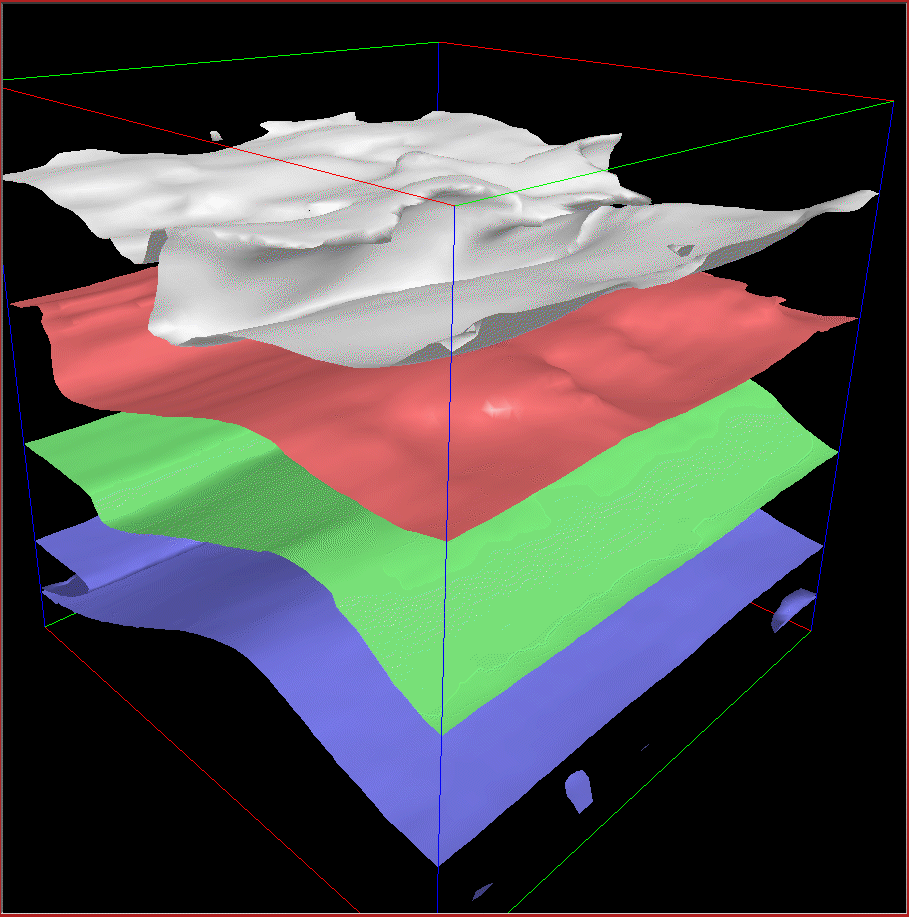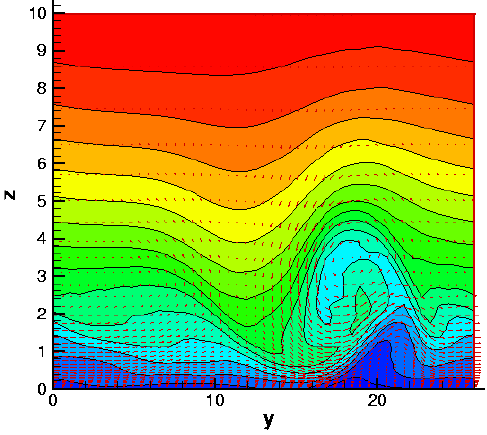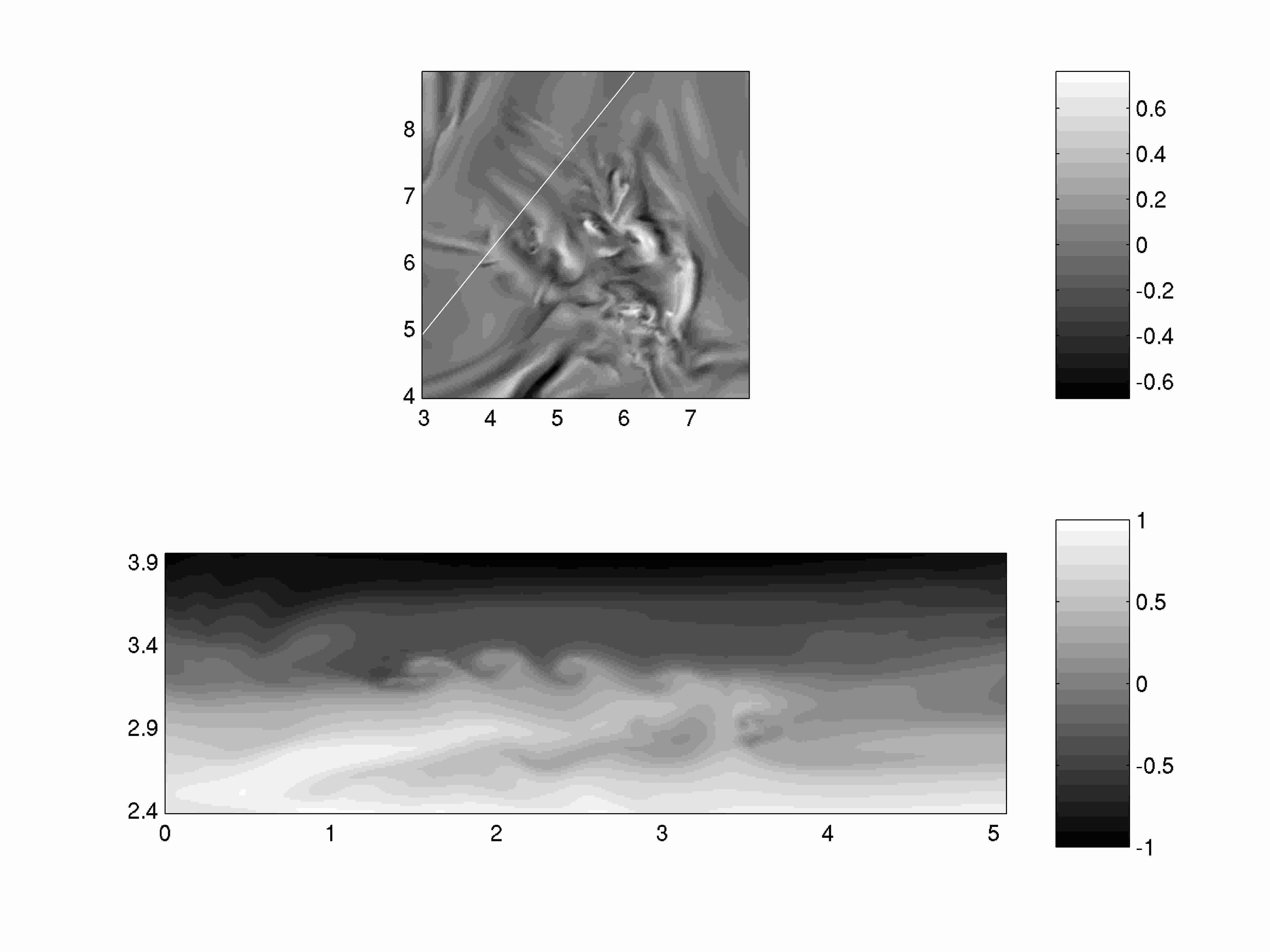
Density-stratified fluids occur in many situations in nature, and sometimes in technology. Therefore the behavior of turbulence in density-stratified fluids has important implications in many fields, from the mixing of chlorofluorocarbons into the stratosphere, to the fate of pollutants in the oceans and estuaries. In collaboration with former Ph.D. students Pascale Lelong (Northwest Research Associates), Kraig Winters (Scripps Institute of Oceanography), Don Slinn (University of Florida), Pete Lombard (private consultant), Jim Barnard, (Battelle Pacific Northwest Laboratories), and Steve deBruynKops (University of Massachusetts), with research associate Oscar Flores, and with colleague Erik Lindborg (KTH, Stockholm ), Professor Riley has been investigating how turbulence is generated in density-stratified fluids, and what are the properties of the turbulence. This work has been sponsored by the Office of Naval Research, the National Science Foundation, and the Department of Energy. Recent work has focused on turbulence due to internal wave breakdown, turbulence in stable boundary layers in the atmosphere, and turbulence when the effects of stable stratification are very strong.

The first figure is taken from a simulation performed by Dr. Lombard of internal wave breakdown. Its shows the distortion of four different constant density surfaces just prior to breakdown of an internal wave into turbulence. (The wave is propagating from the bottom left to the upper right in the figure.) The second figure, from the thesis of Dr. Barnard, is an y-z cross section from a simulation of a very stable boundary layer showing a roll vortex that is transporting cooler air over warmer air. The fluid flow is indicated by the red vectors (somewhat difficult to see in this figure) while the colored contours show the temperature field. The resulting convective instability caused by cooler, more dense fluid overriding warmer, less dense fluid results in a breakdown of the vortex into turbulence. This mechanism may explain the development of sporadic and patchy turbulence in the very stable boundary layer.

The final image, from collaborative research with Prof. deBruynKops, shows, in the lower panel of the figure, local Kelvin-Helmholtz type billows which have developed in a high shear region of a strongly stratified flow. Subsequently these billows break down into patches of turbulence.

In research related to the topic of density-stratified flows, in collaboration with Professor Per Reinhall and graduate student Gerry Pagel, Professor Riley has been working with atmospheric field data to examine causes of turbulence in the upper atmosphere, how this turbulence affects electromagnetic wave propagation, and how this effect can be predicted using mesoscale numerical models of the atmosphere. This research is supported by the Air Force Office of Scientific Research.
A sampling of recent publications on the topic turbulence in density-stratified flows follows.